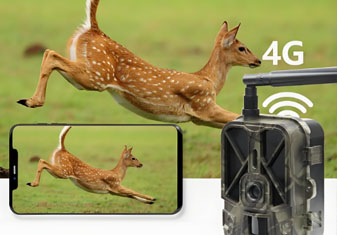Principios De Imágenes De Modos A Todo Color E Infrarrojos De Dispositivos De Visión Nocturna
El modo a todo color y el modo infrarrojo de las gafas de visión nocturna tienen principios y métodos de trabajo únicos. El siguiente es un análisis detallado de estos dos modos:
1. El principio de funcionamiento de la visión nocturna a todo color goggles
The de las gafas de visión nocturna a todo color implica múltiples campos como la óptica, la electrónica y el procesamiento de imágenes. Sus pasos principales incluyen:
Adquisición óptica: Captura luz débil, como la luz de las estrellas, la luz de la luna, etc. a través de lentes especiales. Estas lentes tienen una alta sensibilidad y un diseño óptico optimizado para capturar la mayor cantidad de luz posible en entornos con poca luz.

Image mejora: los sensores (como CMOS o CCD) convierten la luz capturada en señales eléctricas. Posteriormente, se utiliza la tecnología de procesamiento de imágenes para mejorar estas señales y mejorar el brillo y la claridad de la imagen.
Full-color conversión: En gafas de visión nocturna a todo color, un paso clave es retener y procesar la información de color de la imagen. A través de algoritmos avanzados de procesamiento de imágenes, las gafas de visión nocturna pueden presentar imágenes cercanas a colores naturales, no solo imágenes tradicionales en blanco y negro o verde.
Salida de pantalla: Por último, la imagen a todo color mejorada y procesada se presenta al usuario a través de una pantalla (como una pantalla OLED) u otro dispositivo de visualización.
La razón por la que los dispositivos de visión nocturna a todo color pueden presentar imágenes en color se debe principalmente a sus sensores de color altamente sensibles y a sus complejas tecnologías de procesamiento de imágenes. Estas tecnologías pueden capturar información de color con poca luz y procesarla y optimizarla a través de algoritmos para presentar imágenes en color realistas.

2. El principio de la visión nocturna infrarroja devices
Infrared Los dispositivos de visión nocturna utilizan tecnología infrarroja y tecnología de conversión fotoeléctrica para lograr la capacidad de observar objetivos en entornos oscuros. Su principio de funcionamiento es el siguiente:
Infrared detección de radiación: Los dispositivos de visión nocturna infrarroja pueden detectar radiación infrarroja emitida o reflejada por los propios objetos. Estas radiaciones están fuera de la luz visible, pero pueden ser detectadas por detectores infrarrojos.
Conversión y amplificación de señal: El detector infrarrojo convierte la radiación infrarroja recibida en señales eléctricas y las amplifica a través de circuitos. Este paso mejora la fuerza de la señal para que se pueda mostrar claramente en la pantalla.
Procesamiento de imágenes: Aunque los dispositivos de visión nocturna por infrarrojos presentan principalmente imágenes infrarrojas (generalmente imágenes en escala de grises), algunos dispositivos avanzados de visión nocturna por infrarrojos también están equipados con tecnología de procesamiento de imágenes para mejorar la claridad y el contraste de la imagen.
Salida de pantalla: La imagen infrarroja procesada se presenta al usuario a través de la pantalla. Dado que las imágenes infrarrojas se generan a partir de la radiación infrarroja emitida por los objetos, a menudo pueden revelar objetos o detalles ocultos en la oscuridad.
En resumen, los dispositivos de visión nocturna a todo color y los dispositivos de visión nocturna por infrarrojos tienen sus propias características en principio. Los dispositivos de visión nocturna a todo color presentan imágenes en color capturando y procesando información de color con poca luz; mientras que los dispositivos de visión nocturna infrarroja utilizan radiación infrarroja emitida por objetos para generar imágenes en escala de grises. Ambas tecnologías proporcionan importantes capacidades de asistencia visual por la noche y en entornos con poca luz.






















